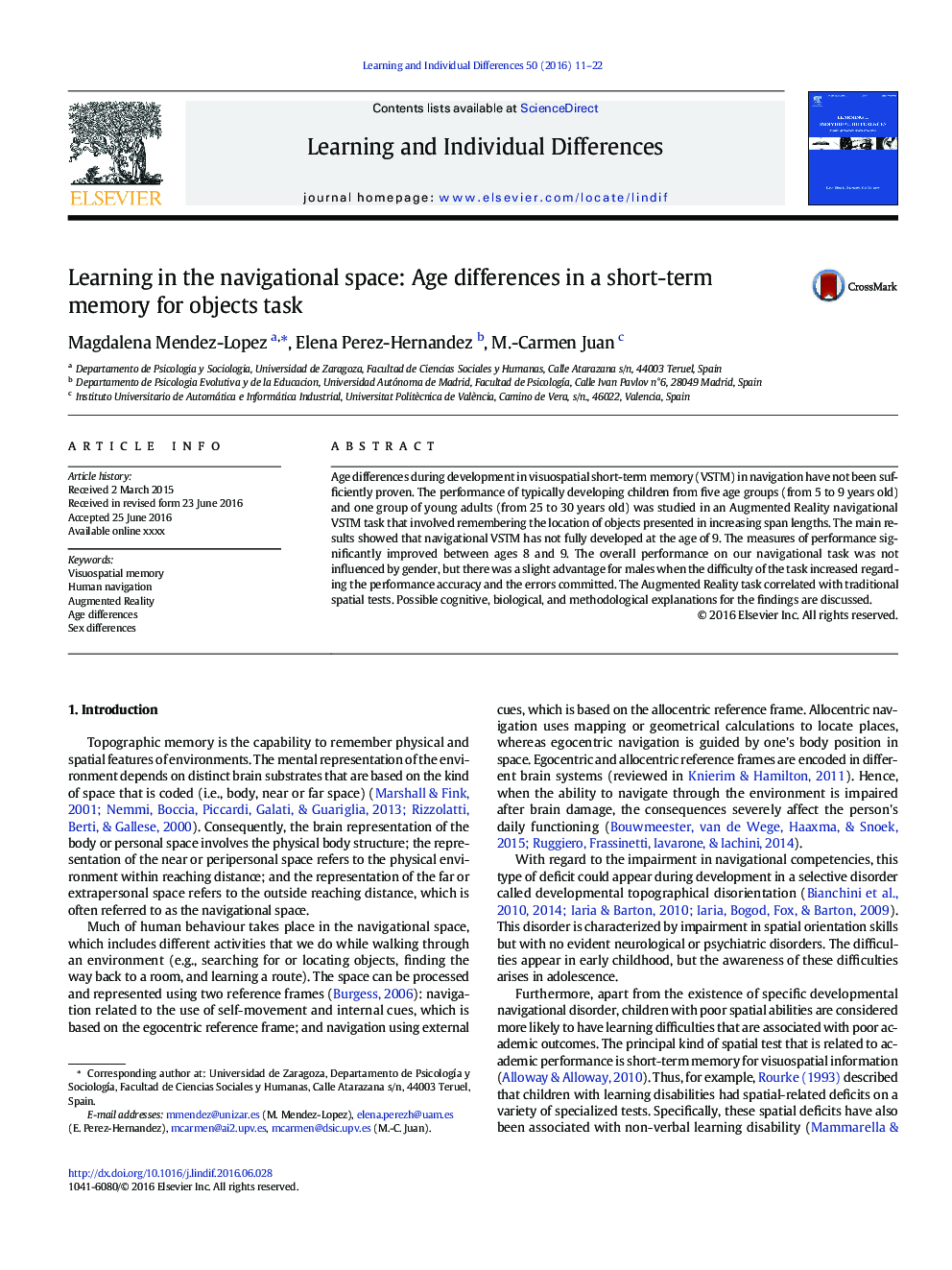| کد مقاله | کد نشریه | سال انتشار | مقاله انگلیسی | نسخه تمام متن |
|---|---|---|---|---|
| 364472 | 621069 | 2016 | 12 صفحه PDF | دانلود رایگان |
• Children and adults play visuospatial short-term memory in navigational space.
• The main increase in the number of visuospatial items recalled was at 8 years old.
• Maturation of the navigational short-term memory was not completed at 9 years old.
• Advantage for males existed when the memory load was higher in the navigational task.
• Verbal or visual strategies could be a primary cause of differences in the master.
Age differences during development in visuospatial short-term memory (VSTM) in navigation have not been sufficiently proven. The performance of typically developing children from five age groups (from 5 to 9 years old) and one group of young adults (from 25 to 30 years old) was studied in an Augmented Reality navigational VSTM task that involved remembering the location of objects presented in increasing span lengths. The main results showed that navigational VSTM has not fully developed at the age of 9. The measures of performance significantly improved between ages 8 and 9. The overall performance on our navigational task was not influenced by gender, but there was a slight advantage for males when the difficulty of the task increased regarding the performance accuracy and the errors committed. The Augmented Reality task correlated with traditional spatial tests. Possible cognitive, biological, and methodological explanations for the findings are discussed.
Journal: Learning and Individual Differences - Volume 50, August 2016, Pages 11–22
